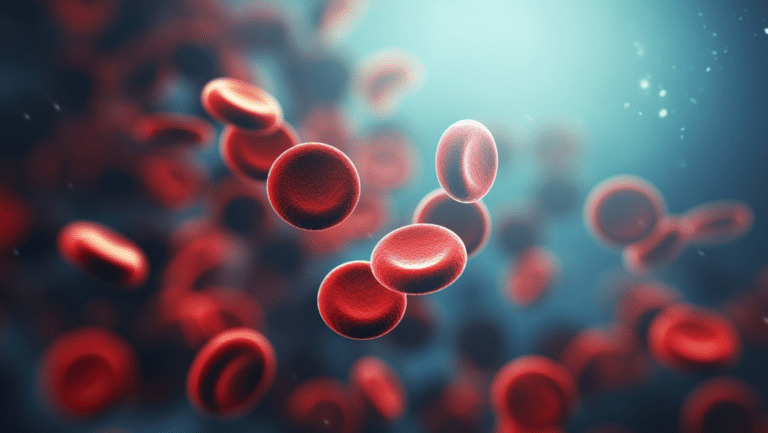Vascular tumor: features, diagnosis, and treatment options
Have you ever come across the term vascular tumor and felt that confusing mix of curiosity and concern? Maybe you wondered, “Is it dangerous? What does it really mean?” I understand that feeling. When a close friend was diagnosed with a vascular tumor, we both felt overwhelmed at first. But breaking it down into simple pieces made it manageable. Let’s talk openly about what a vascular tumor is, how doctors find it, and what the treatment journey looks like — like two friends chatting over coffee.

What is a vascular tumor?
Definition and main types
A vascular tumor is a growth involving your blood vessels — those tiny highways that keep your body alive. But not all vascular tumors behave the same way. Some are benign, meaning they tend to stay put and often cause no harm. Others are malignant and can spread or grow aggressively. Think of it as spotting a wildflower in your garden: some are harmless, while others might overrun the space.
Common types include hemangiomas, which are usually harmless clumps of blood vessels, and haemangioma blastoma, a rarer form that calls for closer attention.
Difference between benign and malignant tumors
Here’s a vital point: not all tumors are cancerous. Benign tumors often grow slowly and remain confined, while malignant tumors invade nearby tissues and can spread. It’s like comparing a calm lake to a raging river — very different in impact.
Vascular lesion and its meaning
You may hear the phrase vascular lesion tossed around. This is a broader term that covers any abnormal blood vessel area, whether it’s a tumor or another issue. It’s like the neighborhood where these vascular tumors live.
Common types of vascular tumors
Hemangioma and haemangioma blastoma
Imagine a tiny cluster of red balloons—that’s a hemangioma. Usually, these appear on the skin or inside organs and are harmless. Haemangioma blastoma is a rare, more serious relative, often requiring close monitoring.
Splenic hemangioma
Did you know tumors can hide in places like your spleen? A splenic hemangioma is typically silent and found by chance during imaging tests. It’s the kind of unexpected guest you didn’t know was there.
Other types and characteristics
There are several other vascular tumor types, each with unique behavior. What they share is abnormal growth of blood vessels—sometimes fast, sometimes slow, but always requiring respect and understanding.
Symptoms and location of vascular tumors
Typical clinical signs
Symptoms vary widely. Sometimes, you might notice a small bump or swelling; other times, pain or no symptoms at all. Ever had a soft lump that changes color or size? That’s a clue doctors take seriously.
Common locations of vascular tumors
From the skin to vital organs like the liver or spleen, vascular tumors can show up anywhere blood flows. It’s like spotting colorful birds in different parts of a forest — surprising, but not impossible.
Diagnosis of vascular tumors
Neurological tests and their relevance
If the tumor involves the brain or nerves, neurological tests become critical. They help doctors understand how the tumor affects nervous functions without rushing into invasive procedures.
Imaging diagnosis: MRI and CT scans
MRI and CT scans are essential tools—imagine them as high-powered cameras that capture detailed images inside your body, revealing the tumor’s size and location precisely.
Biopsy and angiography
Sometimes, doctors need a tissue sample to confirm what type of tumor they’re dealing with—a biopsy. Angiography is another imaging technique that maps blood flow, highlighting the tumor’s behavior like a city’s traffic report.
Treatment and management of vascular tumors
Therapeutic options
Treatment ranges from careful observation to medications and surgery. I recall a patient who chose a watchful waiting approach, feeling more in control with regular check-ups rather than rushing into surgery.
Importance of early diagnosis
Catching a vascular tumor early can dramatically improve outcomes. It’s like spotting a small leak in your roof before a storm hits—prevention saves a lot of headaches.
Post-treatment follow-up and monitoring
Treatment doesn’t end with surgery or medication. Ongoing monitoring is key to ensure the tumor stays in check, similar to tending a garden after planting seeds.
Vascular Tumor Types
| Tumor Type | Common Location | Nature | Treatment Approach | Advantages | Disadvantages |
| Hemangioma | Skin, liver, soft tissue | Benign | Often observation or meds | Usually harmless, may regress | Can cause cosmetic concerns |
| Haemangioma blastoma | Rare, various organs | Malignant | Requires close monitoring/surgery | Early detection improves prognosis | Rare and potentially aggressive |
| Splenic Hemangioma | Spleen | Benign | Observation or surgery if symptomatic | Often asymptomatic, incidental finding | Risk of rupture in rare cases |
| Other vascular tumors | Various | Benign/malignant | Varies by type | Tailored treatment | Diagnosis can be complex |
This table is a quick guide to understand your options and what each tumor type might mean.
Real-life case
One woman I know noticed a small, soft lump on her arm. Initially, it didn’t bother her, but it changed color over months. After visiting her doctor and undergoing imaging, she learned it was a benign hemangioma. The doctor recommended simple monitoring, and the lump gradually shrank over time without invasive treatment. It was a relief—sometimes, patience and knowledge are the best medicine.
Ready to understand your vascular health better?
If you or someone you care about faces concerns about vascular tumors or vascular lesions, don’t wait. Early testing, including neurological tests and imaging, can provide clarity and peace of mind. Contact us today for personalized guidance and take the first step toward managing your health confidently.
This article is designed to guide you gently through a complex topic, transforming medical jargon into a human conversation — because understanding your health shouldn’t feel like decoding an ancient language. How would you explain this to a friend? Maybe now you have the tools to do just that.
Frequently Asked Questions About Vascular Tumors
What exactly is a vascular tumor?
A vascular tumor is an abnormal growth involving blood vessels. These can be benign (non-cancerous) like hemangiomas, or malignant (cancerous) such as haemangioma blastoma. They vary in behavior and location but share the characteristic of abnormal blood vessel proliferation.
How are vascular tumors diagnosed?
Diagnosis typically involves imaging tests like MRI or CT scans to see the tumor’s size and location. Neurological tests may be used if the tumor affects nerves or the brain. Sometimes a biopsy or angiography is needed to confirm the type and nature of the tumor.
Can vascular tumors be treated without surgery?
Yes. Many benign vascular tumors are managed through careful observation or medication, especially if they don’t cause symptoms. Surgery is reserved for cases where the tumor grows, causes discomfort, or poses health risks.
Are vascular tumors dangerous?
Not all vascular tumors are dangerous. Benign types often remain stable or even shrink over time. Malignant vascular tumors require prompt treatment as they can grow aggressively and spread. Early diagnosis is key to managing risks effectively.
Where do vascular tumors commonly occur?
Vascular tumors can appear anywhere blood vessels exist: skin, organs like the liver or spleen, or even the brain. Symptoms and treatment options often depend on their location and size.

